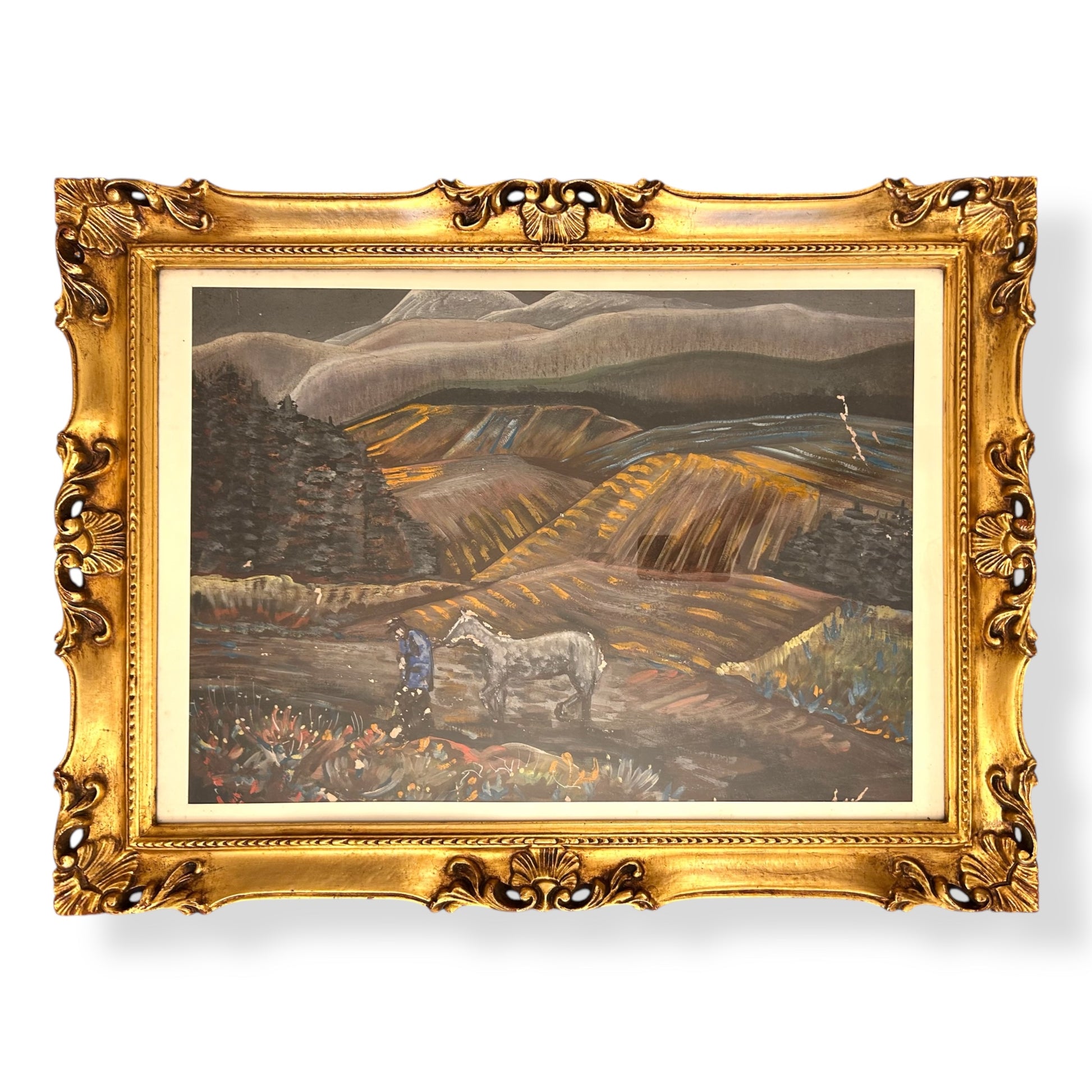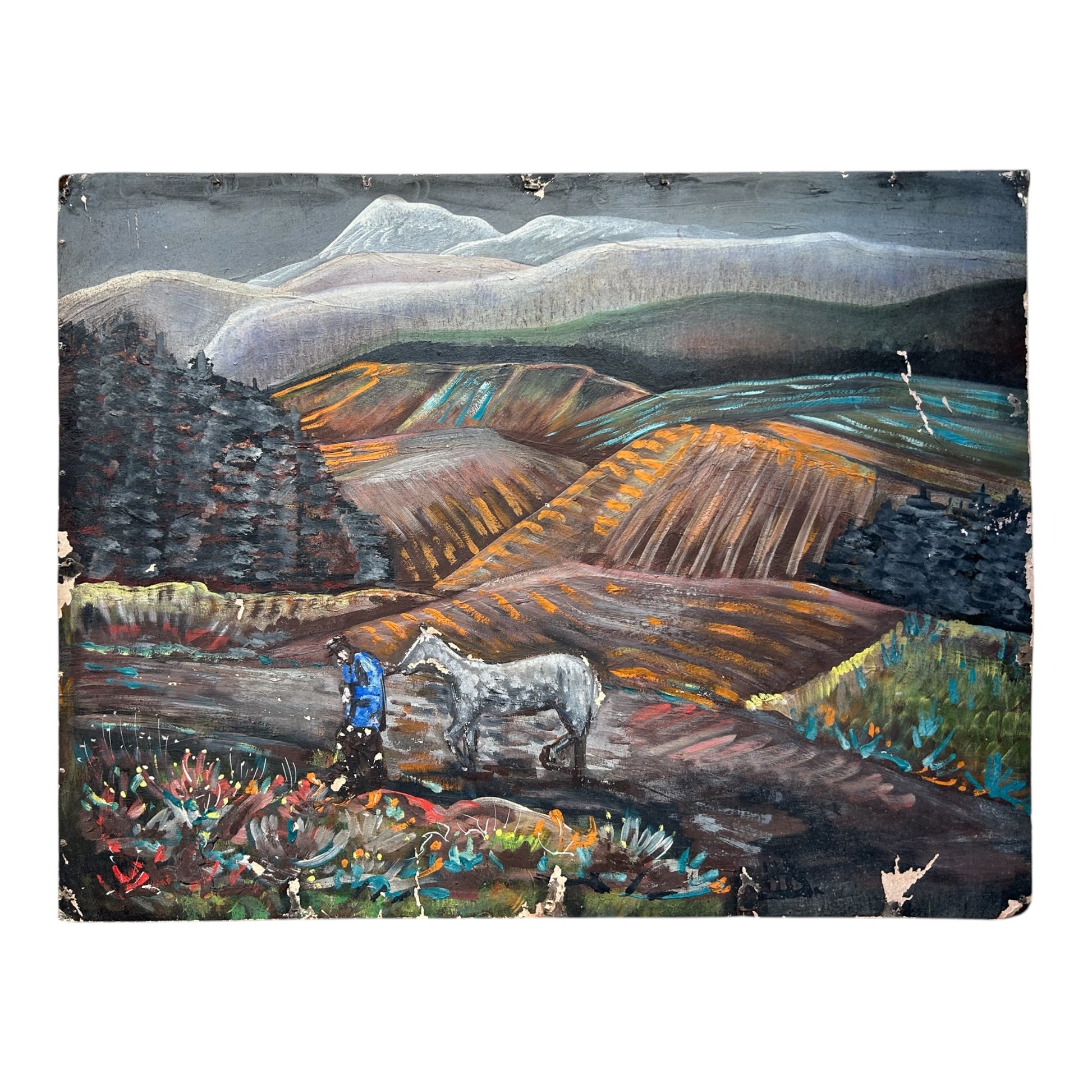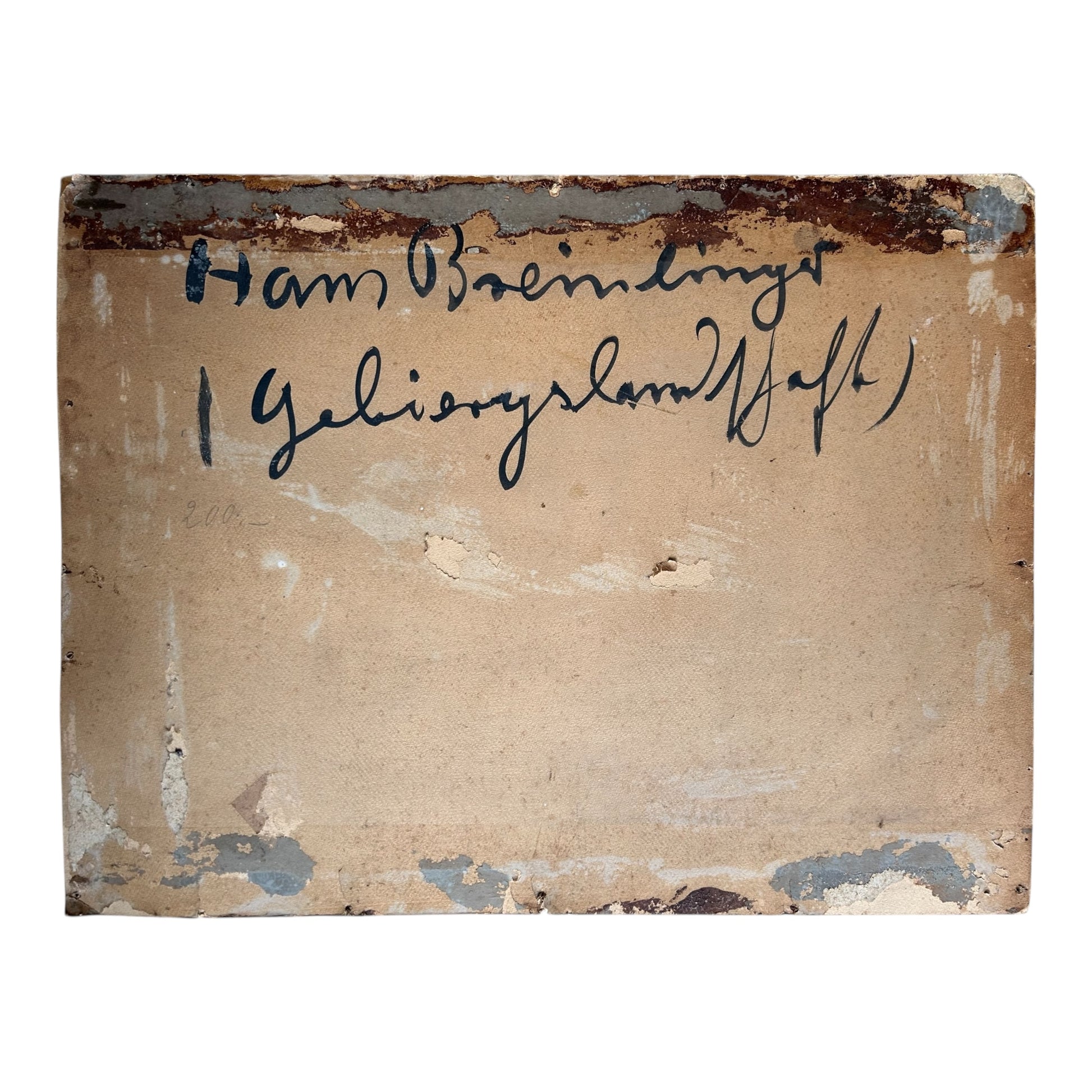GALLERIA GIRARDI
THE RETURN by Hans Breirlinger
THE RETURN by Hans Breirlinger
Couldn't load pickup availability
Share
Hans Breinlinger, a German painter active mainly in the first half of the 20th century, is known for his works, which often reflect expressive atmospheres and evocative landscapes.
Breinlinger, who trained at the Grand Ducal Academy of Arts in Karlsruhe and was active primarily between the 1910s and 1930s, often depicted scenes charged with expressionism and intense emotional atmosphere. A nighttime landscape painting with a wayfarer and horse presents a dark and silent setting, illuminated by moonlight or a soft light source, which highlights the figures of the wayfarer and his horse as they walk. The wayfarer, wrapped in a cloak or simple clothing, is portrayed in a gesture of movement with his horse beside him, a symbol of companionship and travel.
The surrounding landscape is characterized by stylized natural elements, with bare trees, hills, or winding paths, rendered with expressive brushstrokes and dark, deep colors, typical of Expressionism. The nocturnal atmosphere conveys a sense of solitude, mystery, or meditation, recurring elements in Breinlinger's works, which often also reflect the tensions and anxieties of his time.
Hans Breinlinger (1888-1963) was a German painter, photographer, and graphic artist originally from Konstanz, Baden. Coming from a peasant family, he began his career with an apprenticeship in photography and photo retouching, working in various European cities before studying painting at the Grand Ducal Academy of Arts in Karlsruhe, where he was influenced by his master Wilhelm Trübner.
He fought in the First World War, after which he began exhibiting his work, holding his first solo show in 1921. In the 1920s, he moved to Berlin, coming into contact with important artistic circles thanks in part to his marriage to the writer Alice Berend, sister of the painter Lovis Corinth's wife. However, during the Nazi era, his art was declared "degenerate," and many of his works were confiscated or destroyed. His wife, of Jewish origin, emigrated to Italy to escape persecution.
Breinlinger was known for an expressionist pictorial language characterized by intense colors, vigorous brushstrokes, and a strong sense of mysticism and spirituality. His work ranged from landscapes and portraits to sacred art, including stained glass windows and Stations of the Cross, many of which were created in the postwar period in the Lake Constance region. After the destruction of his Berlin studio in 1943, he returned to Constance, where he continued to work and play an important role in the local art scene until his death in 1963.
The painting with the night landscape, the traveler and the horse fits into this expressive and thematic context, reflecting his attention to nature, the inner journey and the symbolic dimension of the human journey.





